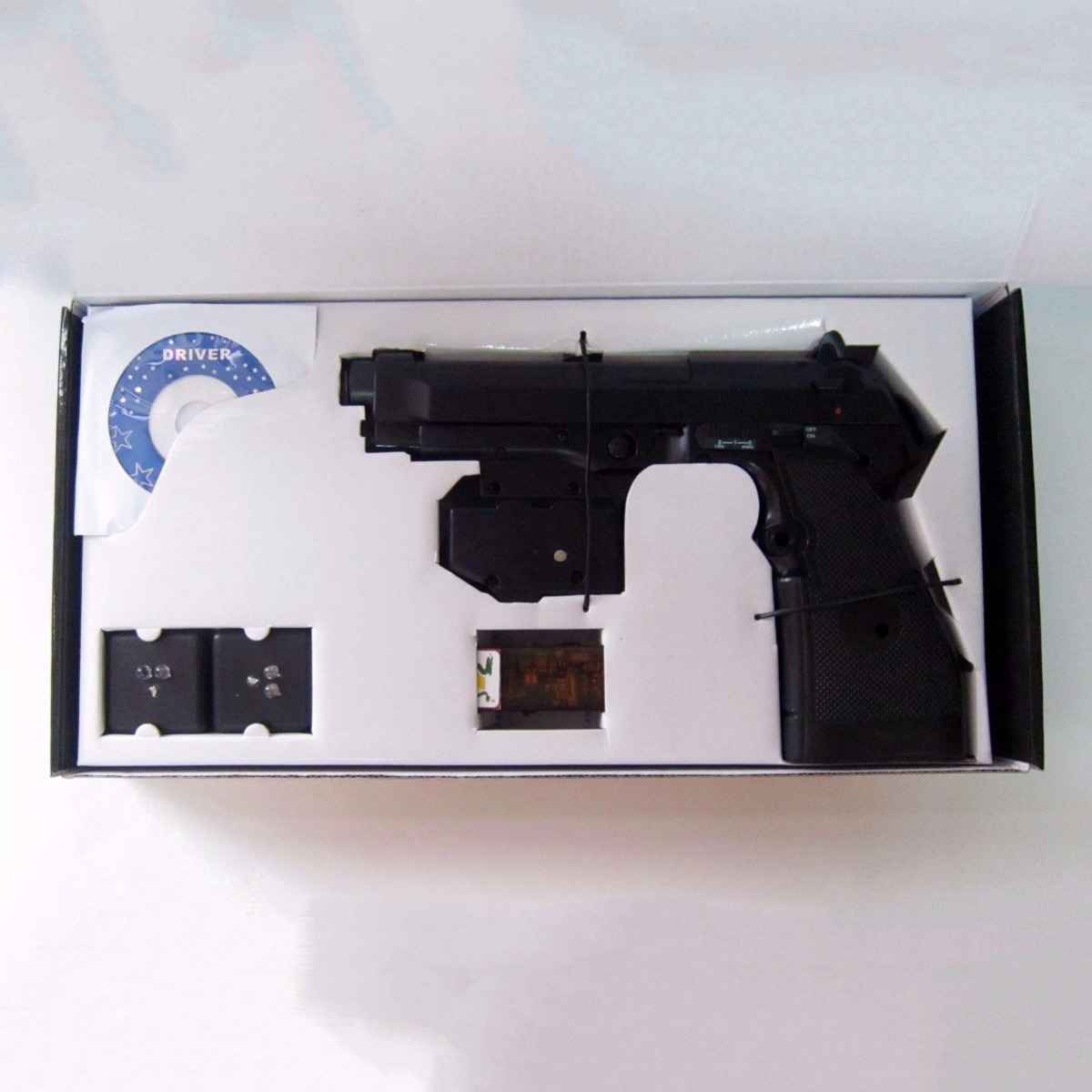

With force feedback, the light gun can also simulate the recoil of the weapon. The video game light gun is typically modeled on a ballistic weapon (usually a pistol) and is used for targeting objects on a video screen.

In 1975, Sega released the early co-operative light gun shooters Balloon Gun and Bullet Mark. Nintendo released the Beam Gun in 1970 and the Laser Clay Shooting System in 1973, followed in 1974 by the arcade game Wild Gunman, which used video projection to display the target on the screen. Sega's 1969 game Missile featured electronic sound and a moving film strip to represent the targets on a projection screen, and their 1972 game Killer Shark featured a mounted light gun that shot at targets whose movement and reactions were displayed using back image projection onto a screen. Periscope was an early electro-mechanical game, and the first arcade game to cost a quarter per play. These games evolved throughout subsequent decades, culminating in Sega's Periscope, the company's first successful game released in 1966, which required the player to target cardboard ships.

If the beam struck the target, a "hit" was scored. These early light gun games, like modern laser tag, used small targets (usually moving) onto which a light-sensing tube was mounted the player used a gun (usually a rifle) that emitted a beam of light when the trigger was pulled. It was not long before the technology began appearing in arcade shooting games, beginning with the Seeburg Ray-O-Lite in 1936. The first light guns appeared in the 1930s, following the development of light-sensing vacuum tubes.


 0 kommentar(er)
0 kommentar(er)
